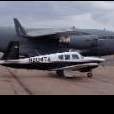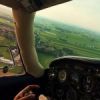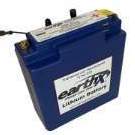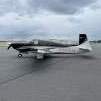Search the Community
Showing results for 'Ross'.
-
Not trying to make light of emergency airspace issues such as the sad DCA debacle or any other mishaps (or worse) due to bad/mis-comms, but I can't recall any aircraft ever falling out of the sky just because control lost their comms or due to radio failure, especially for those on an instrument flight plan en route. Pilots, on the other hand, have often forgotten the number one rule of aviating . . . The media make this sound like the literal sky falls every time the screens go dark in the tower. The sky doesn't fall when that happens. As to the issue of FAA tech and upgrades/maintenance, etc., just imagine if the US Govt was in charge of healthcare versus private industry running it. Oh wait, that already exists: check out your local friendly VA health system versus your local friendly privately-operated hospital. You get what you pay for, which is where this is all heading anyway. I hated seeing the WSJ begin to advocate for privatising the control of US airspace and using Europe and Canada as the best case examples for doing so. Has anyone bothered reminding the WSJ just how few ops there are in Western Europe and Canada combined compared to US airspace? It doesn't even compare. GA will get screwed yet again because the only paying passengers on board to pass through that expense like the airlines do are those of us paying for the plane anyway. And if we think flying is expensive now, just wait until private equity gets involved in that. Ross Perot's huge sucking sound just got its second wind . . .
-
Ross, in our NA world…. We get dense air while at 90%bhp… Our TC’d brethren can get lots of power up where the air is too thin to provide adequate cooling… done well, a tc’d engine can use a set of cylinders around the halfway point to MOH… not done well… the first TOH is before the half way point… the intake systems of the six cylinder Continental engines are nicely designed to easily run LOP… Best regards, -a-
-
Guidance for return to service after engine fire.
PT20J replied to Shadrach's topic in General Mooney Talk
Owner of the museum where I used to volunteer couldn't get the left engine on the B-25 started. Primed the hell out of it leaving a big puddle on the ground. Of course it backfired (well, actually afterfired) on the next attempt and lit off the fuel. Fortunately he got it started and blew out the fire just as the fire guard was running with the fire extinguisher. Ross, I think I'd just inspect everything closely -- too many variables to predict what damage might occur. -

Aft Spar Web SB Doublers M20-217
Andy95W replied to TravelingIA98's topic in Vintage Mooneys (pre-J models)
I mostly agree with what Ross said, above. One additional piece of information is important, though- if the rear spar splice is not cracked, there is only one doubler to install. It is relatively straightforward. If that piece of metal IS damaged, the SB repair becomes much more involved and requires a second doubler be riveted in place inside the rear spar center splice box. That’s a big increase in work. Finally, a lot of people call it the “stub spar”, but it’s not. The Stub Spar is actually the rear attach point of the landing gear and runs under the rear seat back. -
Ross- Very cool! Thanks for sharing. There is quite a bit of space back there. My wife and I want to fly with our dogs and it makes sense for us and our mission to convert the rear seats into a cargo area. I appreciate your efforts with the photos. Norm
-
The old rule-of-thumb is that speed mods cost about $1,000 a knot. That's why I never bothered to make any changes. I always wanted to do the cowl closure but, even then, I couldn't justify the expense. I have a one-piece windshield, but it's not the sloped 201-style. As Ross mentioned above, those two avionics access panels on the stock F have been a godsend and I wouldn't trade them for looks or a couple of extra knots.
-
Rarely is the SOS box itself truly the problem; it's not hard to replace if it is...though mounted in an awkward location on cabin side of the firewall. I think what Ross is referring to is that you can crank it forever in start position and then it only fires immediately you give up and move it back to both position. That could be a dead SOS box, it also could be a problem with the left mag. If you turn key to both without pushing in to engage the starter, you can hear the SOS buzz and likely that's fine. If you don't hear the buzz its the SOS box, its connection to the battery, or its connection to the ignition switch. Surefly mags are great but you want to diagnose the problem first. Here's a troubleshooting guide from Don Maxwell for the SOS system, which is a great system overall. https://www.donmaxwell.com/shower-of-sparks
-
If a G model, it will be O-360-A1D with shower of sparks (unless left mag converted to electronic ignition - eg Surefly) Be careful not to flood - more than 6 or 7 total throttle pumps will pour out onto your front tire and create fire hazard . If that happens clean it up and walk away for 30 minutes to let fuel vaporize, then use flooded procedure in POH If its suddenly cold for first time where you are that's probably the reason - use ~3-4 pumps before cranking and one or two while you crank, or preheat - that helps enormously! Don't keep pumping if its not working though.... Go easy on the starter - it's easy to fry it, dont crank for more than 15 sec or so. Further troubleshoot is basic fuel/compression/spark/timing consideration; formal lycoming guide helps https://www.lycoming.com/sites/default/files/attachments/SSP-475.pdf Ross probably has some more focused tricks distilled from procedures in document, as will most any A&P. I've been in this situation several times - the most interesting one was caused by a loose contact on the ignition switch after getting avionics work done
-
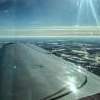
Major versus minor alteration; voltage regulator
FlyingDude replied to Jetrn's topic in Modern Mooney Discussion
Sorry Ross, I wasn't aware of your previous post. I saw the first one and the final ones on field approvals. I second @A64Pilot's comment below. the control loop needs to be fast enough to keep up with load and rpm fluctuations (which I am sure the solid state R1244 can keep up with the buzzers (VR414/4 and DGR-2) but compensated enough to prevent jitteriness or instability. The field current required by the alternator needs to be within the expectations of the regulator in terms of output voltage and load current combinations, both for corner cases and for the steady state. You can't have a 70A alternator that wants 4A field at 1500rpm and a regulator that maxes at 2A, for example. You might get instability and oscillations, or it might just not be able to provide the highest current (leading to voltage crash) or the lowest current (leading to overvoltage, which will then make the alternator zero the field current). I have an R1244. When I bought my kit, they didn't ask me if I had an alternator in my Mooney and if I wanted to keep it. They shipped me an overpriced automobile alternator together with the regulator... Let's go over your findings: M20J/K models can use TCM alternators and VR414,DGR2 regulators; all interchangeably. That's fine per TCDS. M20J/K models can be fitted with Planepower alternators that use R1422. That's per STC. What OP @Jetrn wants to do is to match the TCM alternator with an R1422 because both TCM and Planepower alternators are approved for Mooneys. Just because those 3 alternators are approved for an airframe does not mean that the accompanying regulators are also all approved, all interchangeably. You need some data to show that TCM - R1244 combo was made and it supported the required load conditions at the same engine rpms. If you have this data, as an engineer, I'd be OK with the combo. What FAA will do or say ... other dudes here are more knowledgeable in working with FAA. Otherwise, all rest is debate, conjectures and refutations (i.e. futile). I'd still recommend the OP to get a complete Planepower kit. -
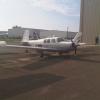
Major versus minor alteration; voltage regulator
tony replied to Jetrn's topic in Modern Mooney Discussion
Ross, I really don't think you know how the FAA works, I probably need to say doesn't work. The FAA has ACOs, MIDOs, FSDOs, and none of the talk to each other. The engineering side would agree per 14CFR21.93 (a) this is a minor change. But the operational side who holds airworthiness in their hand says, there is no engineering to support the change. So here we are, stuck in a place where the airplane sits on the ground for paperwork. Life is short and I'd rather go fly then argue over who is right. The OP needs to just draw up a an engineering drawing that supports this change in his specific airplane, throw an 8110 on the engineering (not the part), and then use that with the FSDO. This happens everyday. -
Sorry for the confusion, Ross. I didn't mean to imply the pic I showed was a mod, only that there is a variant for the FI-engined birds and was posting it to show others who may not be familiar Thanks, David. I'll PM you. Not to put any pressure on you, but do you think this could be applied to a conventionally-cowled C-model? Thanks for the link, 47U. Looks like I have a lot of reading to catch up on.
-
Hi Ross, I totally get what you're saying and your concerns after having something like this happen to you and having a lower capacity battery makes you uncomfortable, whether it meets requirements or not. I get it. The EarthX battery is designed with purpose and intent. We did not design the battery to have double the capacity for a reason. The more capacity, the more cranking power, the more cost. It would have way too much cranking power for your system at around 760CCA. The 15.6 Ah did exceed what has been determined as the safe capacity for a pilot who follows their POH and engineered to have a 150% margin with nighttime flying IFR conditions. The capacity testing requirements are performed to ASTM F2490-20 for electrical load shedding from cruise to emergency conditions if you find yourself in flight without an alternator. It does assume the pilot follows procedures in their POH and begin shedding their load. If you have critical equipment, you must have a backup power source. In the event of an alternator failure, there are many ways your plane alerts you to this situation and this can be different depending on the equipment you have installed. The ETX900-TSO also has a required LED to be installed on your panel and alerts you with a flashing LED light when you have drained the battery to 70% of its capacity. All certified products are tested to what is not only sufficient in practice, but also built in margins of error. They are not designed to theory.
-
Hi Ross, Just a clarifying note, the 161 tests over the 5 years take into consideration every conceivable test/scenario you can imagine..... and then more. About the only "ground" test is to start the plane.
-
Takeoff Trim Setting - New to me 1970 M20F
AJ88V replied to ProtoFly's topic in Vintage Mooneys (pre-J models)
Point well taken, Ross. Perhaps 'out-of-trim' was sloppy language on my part. I do know that I have to firmly hold the yoke forward to maintain pitch, then rapidly roll in trim to take off the pressure and let the plane accelerate for cruise climb. But what you wrote is technically correct. - Cheers, AJ -
All good Ross. I provided my data with photos and compared to another E owner. Just trying to help Andre get there. Speed mods and flying with more fuel ((like 1gph) DO make a big difference
-
Ross, I had 2500 instead of his 2400rpm and bested his 7500’ speed. I essentially have a J in my E. He had cowl and speed slope mods on his E.
-
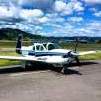
M20F crash Carrizozo NM 8/2/24
Ragsf15e replied to Mooney in Oz's topic in Mooney Safety & Accident Discussion
I agree with you about that ff being too low. Usually Ross is correct on these engine questions 100% of the time, so i was doubting myself, but it’s definitely higher than 10. I would think even 100ROP would be slightly higher (maybe 11gph?) and as you said, cooling is key. I use target egt for my high DA altitude takeoffs and that leaves me around 200 ROP which seems to be a reasonable compromise between cooling and power. I’d guess around 13-14 gph at that DA, but I’ll check my engine data as I took off at a very similar DA just last month in MMH (so yes, it should do it just fine unless there’s mitigating factors). -
M20F crash Carrizozo NM 8/2/24
PT20J replied to Mooney in Oz's topic in Mooney Safety & Accident Discussion
OK, now we are going to call you Rhymin' Ross -
Mine followed as your Ross at about 5 hours I changed the oil my oil usage was low and still is a year later, all temps great CHTs around 295-315 I’ve worried lately from not using oil. Mine is a Continental only difference. I’d talk to engine rebuilder regarding the oil in the bottom…good luck D
-
Why you can’t land a Mooney until it’s ready
kortopates replied to mooneyflyfast's topic in General Mooney Talk
To add on to Ross’ post, i would add one of the most fundamental steps in learning how to land any airplane is the round out or what we use to call flare. Never do we land strictly level, but we continue to raise the nose in ground effect while keeping the cowling just below the end of the runway looking straight ahead, while allowing the mains to settle on the runway. The really proficient pilot doesn’t relax the back pressure till the yoke is fully back to take advantage of aerodynamic braking (with exceptions for crosswinds) before letting the nose wheel contact the runway. Over rotating, and losing sight of the runway straight ahead, risks a tail strike; more so in long body. We have all learned what happens when we fail to execute the round out or flare before impacting the runway; hopefully well enough in trainers so as not to be reminded in a mooney. So the pitch attitude on the ground really has nothing to do with how to land a Mooney or any aircraft. And lastly every formation pilot learns how to land their Mooney as fast as 90 kts on the runway killing the myth that you can only land at the “proper speed”. But of course a formation landing is very different from a normal landing. Aircraft need positive pitch on the ground for stability else, we’d be wheel barreling down the runway. Sent from my iPhone using Tapatalk -

Why you can’t land a Mooney until it’s ready
MooneyMitch replied to mooneyflyfast's topic in General Mooney Talk
I always appreciate your posts, Ross ! -
Mooney M20E Power Boost wiring diagram
Carl Everitt replied to Carl Everitt's topic in Avionics/Panel Discussion
I need the wiring diagram for the BOOST light circuit. Thanks @Ross, Thanks for the diagram, it was a great help for GFC 500 install/avionic/panel upgrade Carl




